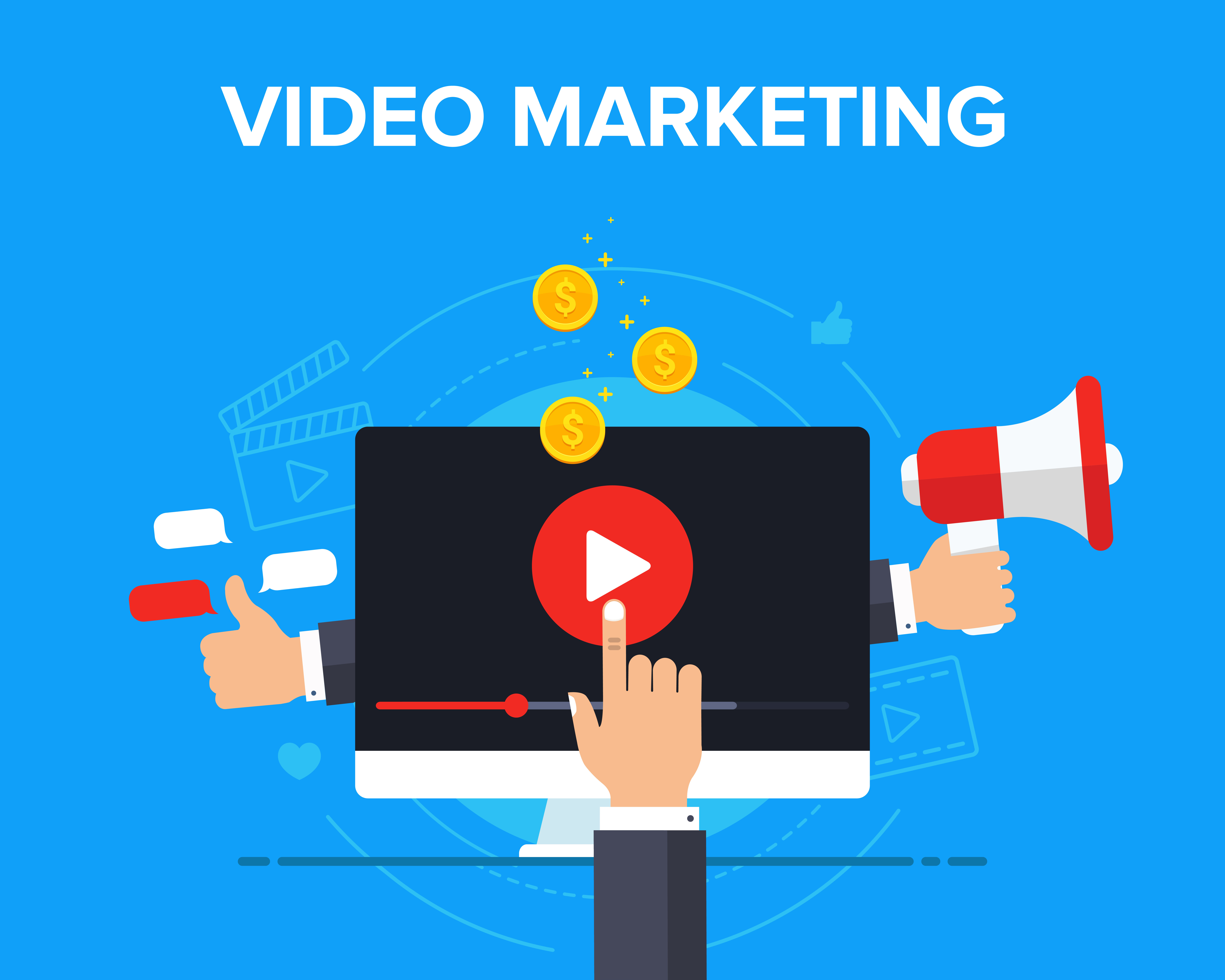You need every edge and tool you can find to beat out the competition. This means redefining your marketing strategy to get your products or services in the hands of your customers. And one of the most popular and interesting strategies today is video marketing.

Now, you may ask yourself what video marketing actually is. Simply put, video marketing is promoting your business by using online videos. These videos should be, but not necessarily, focused on your services and products. But they can also place and promote content relevant for your business through the medium of short or long form videos. In this way, you will get more outreach, more customers, and, even, business partners. You can place these videos on YouTube and promote them on any of your dedicated social media pages and platforms as well.
If you’re going to be successful at video marketing, you are going to need to know how to measure your results.
How to Measure The Impact of Your Video Marketing Strategy
View Count
View count is a simple measure of how many times a video has been watched. On YouTube, the view count is displayed just under the bottom left corner of the video player. View count is the most important metric to focus on for most businesses, as it represents overall interest.
One thing you need to know is what counts as a view. On YouTube, a view is counted only after 30 seconds of watch time. This differs platform to platform. Case and point, Facebook counts views after only 3 seconds. Understanding this will help you better understand the interest of your viewers. The rule of thumb is the longer they watch, the more interested they are. This generally means your YouTube viewers will be more interested in your videos than Facebook viewers. Be sure to check your video views and compare them against website referral activity from both platforms in Google Analytics.
Play Rate
Play rate is similar to view count in that it keeps tracks of views, but it goes a level further. Play rate counts how many times a video play button has actually been clicked. This is an important metric to understand because you may have a video that appears on multiple websites.
If you have a brand video on both the Washington Post and on Wired, you can measure play rate metrics to understand which website yields more views and, in turn, better understand which websites are more effective for your business’ video marketing strategy.
Play rate will give you the most detailed information about your audience solely from which web location it gets played on.
Social Sharing
Another crucial metric to understand, for viral marketers, is how many times has your video been shared.
Social sharing is the metric you should pay attention to if you want to understand whether or not your video resonates with your viewer base. The reason behind this is simple: people don’t share resources with others they are not interested in. If they don’t believe the content to be interesting or helpful, they will gloss over it. Sharing, however, means the viewer has decided they resonate with the content and are now acting, in some capacity, as an ambassador for it.
Make sure to place a large emphasis in your measurement attribution analysis on videos that gets shares.
Viewer Comments
Comments are a great way to understand the opinions or concerns your customers have with your business. If viewers are leaving comments on your social platforms, you have the chance to engage with them. Whether the comments are positive or negative, you have a chance to interact with an interested party.
Don’t let them go. Save their information and incorporate it into a list for future outreach. If the comments are negative, update them with any improvements to your product or service. If they are positive, try and offer them discounts and promotional codes to encourage them to become a customer.
Successful Types of Marketing Videos
Explainer Videos
You might find, in recent times, many companies have, typically, animated videos that explain aspects of their business or quickly tell their brand’s story in a short but memorable way.
These videos are called ‘explainers’. They explain their business in a clear and succinct way. You might find these types of videos on homepages, as they quickly bring viewers up to speed.
These videos work well because not only do they explain the business, but they help connect the customer to the brand by explaining what the business can do for them and why they should choose it over any other.
You might be thinking, “I could just read their homepage to get the same information.” That’s true; however, if you think back to when you were in school and how helpful it was when a teacher explained something to you in plain language, this is what these videos are trying to emulate. Most people will respond better to an audible description over reading, even, a couple paragraphs.
Educational Videos
Education videos are in the vein of the ‘how-to’, step-by-step instructional videos most people seem to like.
These videos are effective at, you guessed it, educating your audience about a new development, new process, or to build foundational knowledge about your company.
If your business product or service is complicated and you require some level of onboarding your customer to the idea of it, educational videos can be a great way to teach them.
Case Study / Testimonial Videos
People love examples. Examples are how we learn and solidify our knowledge. Why not use examples in your marketing videos.
Creating a real-life case study video is an excellent choice if you’re looking to show how to solve a particular problem your potential customer is likely to face. If you can show an example of a previous customer providing testimonial on how they used your product or service to solve their problem, you will immediately build trust with potential customers.
Demo / Webinar Videos
If you think of a series of educational videos as stepping stones from the top of your funnel (interest) to the bottom (conversion), a demonstration video is one large stone.
Instead of creating a series of highly individualized videos focusing on smaller aspects of your business service or product, a demo shows off its full capability. By watching one video, your business can qualify and sell to potential customers with webinars.
These videos are typically in late stages of funnel and work best as webinars. As they are longer in length (typically around 1 hour), they have inherent power to move an interested party from potential customer to customer.
In your demo video, showcase the power of your business and offer a time sensitive discount at the end. With webinar conversion rates as high as 25%, every online business should consider this type of video in their digital marketing strategy.
Expert Interview Videos
The last type of successful video many companies create is the expert interview.
If you can secure a notable expert in your industry for interview, film it. These types of videos work wonders for creating brand trust and loyalty. If others see you are interacting with other big players in your industry, they will assume you know what you are talking about.
This approach can be applied to influencers as well.
Video Marketing Strategy Tips in 2019
Good Looking Thumbnails
If you are planning to upload brand videos to YouTube, you should think about how you plan to create thumbnail images for each video. These should make people want to click on your video. For that to happen, you need to creating engaging, colorful, and eye-catching video thumbnails.
Before viewers actually watch your videos, they will see a thumbnail of the video. It may surprise you but viewers will judge your videos before they even play them. As it is the case with many successful YouTubers, they all use consistent thumbnails to display their videos.
You can even go so far as using thumbnails to segment which type of video category your video belongs to. This will help viewers to have a consistent expectation of which video to watch based solely on its thumbnail image.
Don’t Forget About the Description
With YouTube, you are providing yourself a disservice if you don’t fill out the description for your videos.
Prior to watching a video, many people will skim your video to see if the video they are watching is actually relevant to them. Since videos aren’t easy to skim, you can help affirm your viewers they are in the right place by providing video section titles and corresponding video section times in your description. This will help your viewers save time and get to the most relevant content.
In addition, you can write an informative summary that highlights what your video is helping to accomplish and what viewers will get after watching the video.
Lastly, provide links to important pages or social media channels as well.
Good, Quality Content
This one is quite obvious, and yet so many companies let it fall by the wayside. The videos you create (or have created for you) must be well done and well made. Now, this doesn’t mean you should have James Cameron make an epic three-minute video using the latest equipment available. What it does, however, mean is that you don’t make the mistake of creating lazy content.
Also, keep in mind how long your video should last. Just because it lasts for 15 minutes and has a cohesive Campbellian story, doesn’t mean it’s good. Sometimes 60 seconds is more than enough to explain all the necessary details.
Be Original With Your Content
The rule of thumb here is to try to stand out. Aim to create 1 minute videos where you promote content that teaches your potential customers something about your work or your products. Say you sell camping equipment, posting tutorials on some basic camping skills like how to set-up a tent or how to build a fire will certainly net you some positive attention. If you choose to go this route, create the videos specifically using the gear you are trying to promote and sell.
Set-up a Proper Schedule and Plan
You shouldn’t just post as many videos as you want, whenever you want. Remember, you have a limited amount of time and resources when creating marketing videos. On the other hand, if you’re just using videos from the web, know that even these can run out – think long-term.
So, setting up a schedule could mean that you created 20 videos (or have 20 videos ready) about the basics of camping. If you post all of them in two days, you won’t really develop a relationship with your customers, and you won’t even achieve some SEO goodies that come along with videos. But, if you post one video per week or every other week, you will have more time to develop and observe the interaction happening with your videos. You will have more room to adjust your schedule, if needed. Getting a proper social media team will definitely help you with this.
Get Your Audience to Join In
One of the great benefits of social media is the connection you can develop with your customers. They can directly contact you over Facebook or Twitter, and you can do the same. In this way, you can figure out what they want, and get some feedback on your work. What you can also do, however, is ask them to post content of their own. Give them a challenge and offer some kind of reward for the best video involving your product. This will do wonders for your brand, and really make you stand out.
Remember, video marketing strategies are not about Hollywood level film crews and supermodels. These are all about proper planning, originality, and connection with your target base. Try to be original and thorough, create good content and plan everything out, and you will definitely see success. And the best part is, you can have fun with it and let your creativity run loose.
Read more:




